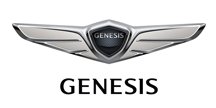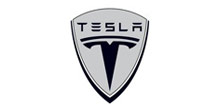Autonomous Vehicles: What’s LiDAR?
With all the buzz about autonomous driving, you might be wondering if it's real. That is, are we really going to let our vehicles drive us around soon? While we can't know how much time will pass before autonomous vehicles are legalized, we know that the technology continues to advance. A case in point is recent innovations involving LiDAR.
LiDAR is a portmanteau of "light" and "radar." It's also said to be an acronym for Light Detection and Ranging, according to Wikipedia. It works a lot like echolocation, the process by which a whale or other animal makes sounds and measures the distance of an object by the time it takes the echo to reach them. Instead of sounds, LiDAR uses laser light. Read on to learn more.
The Players
LiDAR needs to be adapted for use by cars and trucks because most experts agree that it's better than radar, which is currently being used for collision avoidance systems in a number of vehicles. IEEE, an engineering association, says LiDAR is currently too expensive for autos. That's why there's a race to make a viable LiDAR product for affordable vehicles. Some examples of players in the LiDAR game are Innoviz, an Israeli startup, and Velodyne, which got a $150 million investment from Ford and Baidu this month. Another player is Quanergy, a company that has plans to make a $250 sensor available to auto manufacturers by the end of 2017.
The Benefits
LiDAR is better than the technology we currently use for "autopilot" because it's more precise at a distance of up to 200 meters. It creates 3D images that navigational applications use to direct the vehicle and prevent accidents. In short, it's smarter and more detailed than our current auto technology because it provides more information. It's also reliable in adverse conditions such as rainy and snowy weather.
Velodyne told Fortune that the cost of autonomous vehicles will be driven downward as LiDAR becomes cheaper, but there's no way of knowing how expensive the first truly autonomous vehicles will be at this point.
Drawbacks
Aside from cost and complexity, there are no obvious drawbacks to LiDAR. There are many questions, however. For example, we still don't know exactly how much testing is necessary to make sure autonomous travel is safe. Therefore, we still don't expect autonomous vehicles to rule the road any time soon.
Get quotes from your local dealerships and find the right deal on your next vehicle. Click here.








































